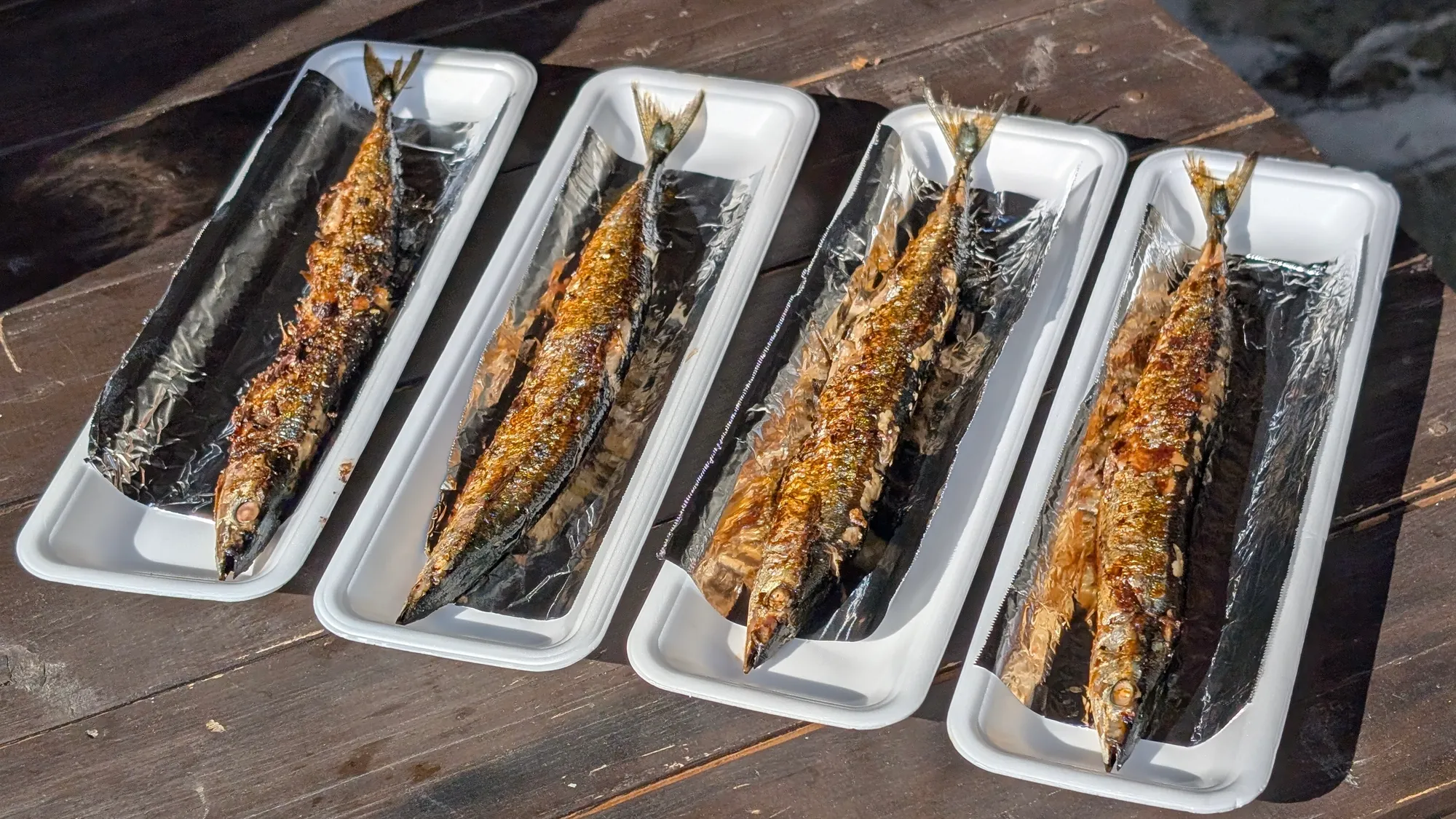Today, we took a dry suit course, essential for the ice floe diving planned for February.
We arranged it with Izu Aquamarine. The location was Yawatano Beach, and we visited Yawatano Diving Center.
Since we live in Tokyo, it takes about three hours to get to Izu. We left around 5 AM, and it was much colder than I expected in the morning! I wore my dry suit underclothes for the drive.
My outfit was simple: regular underwear, a quick-dry long-sleeve T-shirt and sweats from DONKI, and long socks. (It was a bit chilly, so I added a hoodie for the drive.)
With a dry suit, you can enjoy diving in regular clothes rather than a swimsuit. I was skeptical that seawater wouldn’t seep in once I entered the ocean.
More on that later ☺️
Before getting on the highway, I picked up the following at a convenience store:
- Water
- Convenience store coffee
- Protein bar
- Gel-type snack (Lately, I’m hooked on In Jelly CHILL & GO Orange flavor.)
- Rice balls (I made them myself this time.)
Coffee is essential to wake up! The rice balls serve as breakfast in the car.
The protein bar and In Jelly are handy for a quick nutrition boost between the first and second dives.
On the way to the diving center, I saw a sunbeam streaming through the clouds, often called a “ladder of angels.”
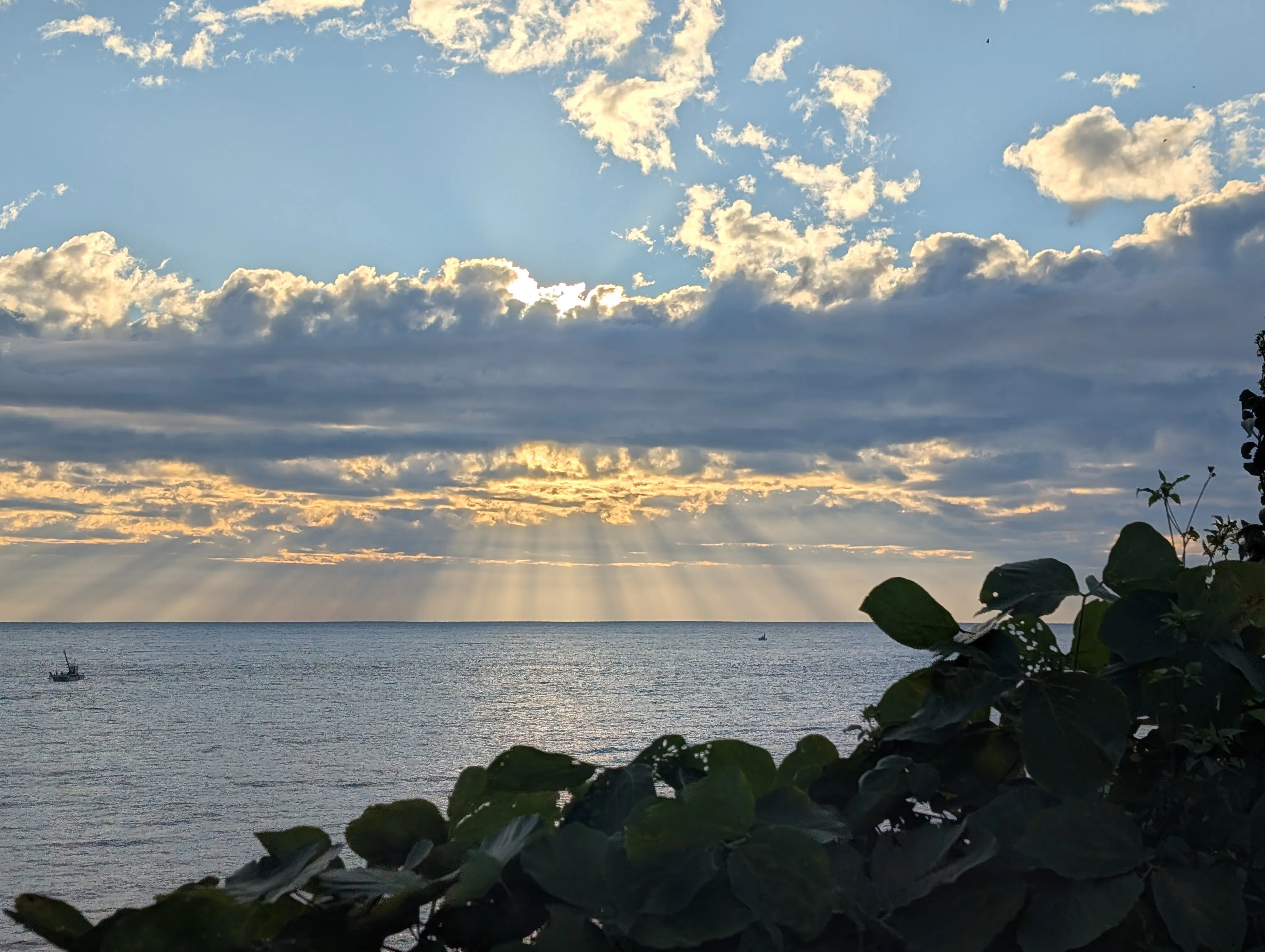
The beautiful scenery washed away my daily stress!
The Izu Aquamarine store is located near the Izu Oceanic Park (IOP).
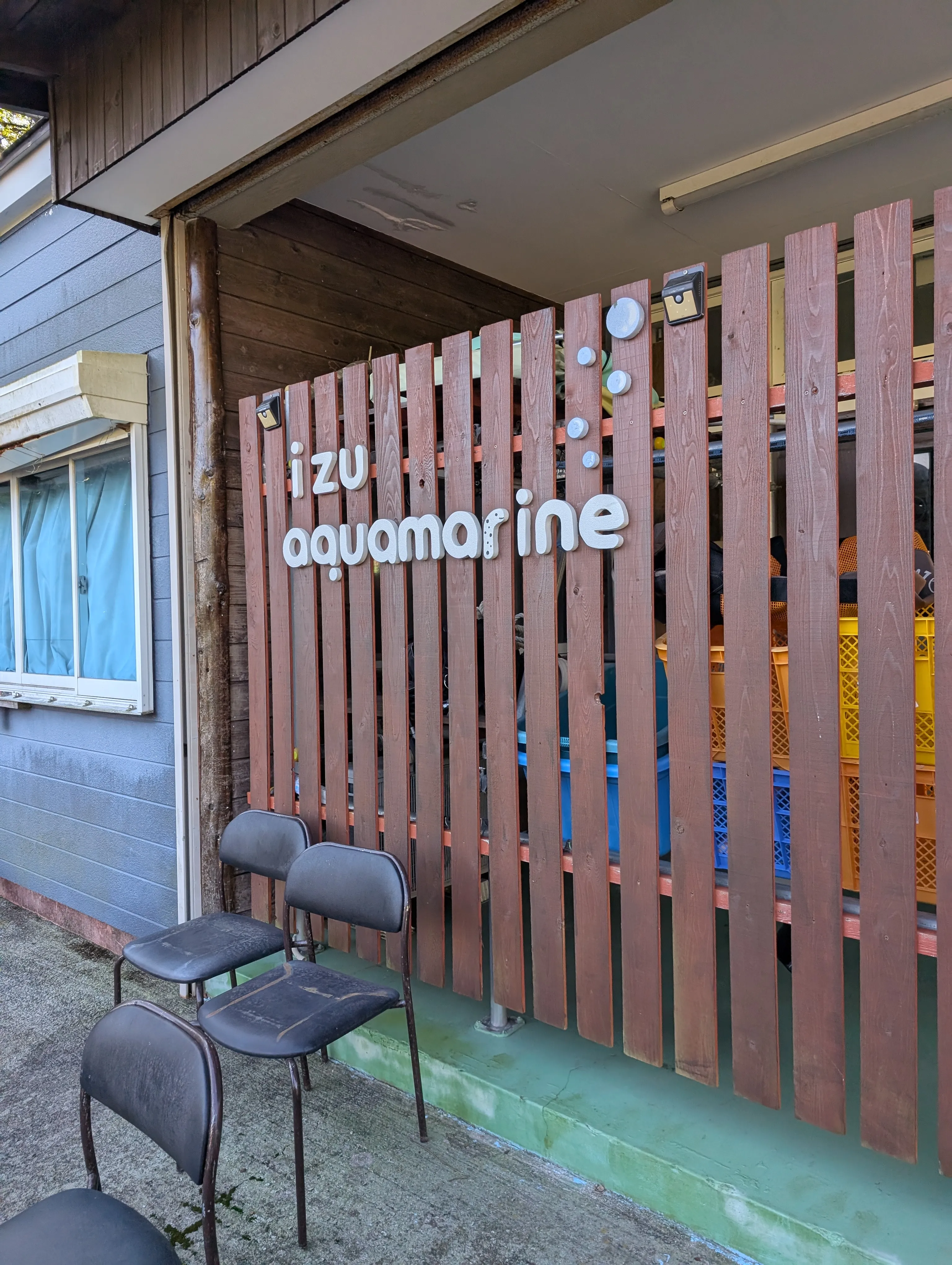
First, we checked the dry suit section of the PADI Advanced Open Water course textbook at the Izu Aquamarine store.
Then, we moved our equipment to Yawatano Diving Center.
We prepared everything except the dry suit in advance, ensuring we could dive immediately. I was careful to close the tank valve to avoid air loss before putting on the suit.
The dry suit has a special zipper to keep water out, which is a crucial feature.
After tucking the pants hems into my socks, I put on the suit with attached boots. There are shoulder straps around the middle of the suit, which you sling over your shoulders.
The suit’s wrist area uses a unique rubber, so I applied gel to the inside to make it easier to slip my hands through. It worked smoothly.
The hood is made of a delicate material, so I was advised to avoid catching it with my nails. I pushed my head through with a firm “Munch!” but struggled to get it fully on, so the instructor, Ko-chan, and my buddy Shawn helped me pull it on.
At this point, they noticed a tear around the neck area, so I removed the dry suit halfway to check for any leaks. When water was poured on the cut, it seeped through, so I was given a different dry suit.
Any damage allowing water to enter can cause a dive to be canceled due to flooding, so I was glad they noticed it.
Once I put on the dry suit, I folded the neck area and fixed it with a “Munch!” to secure it. The neck area felt tight on land, but I barely noticed it underwater. To keep water out, I also tightened a band made of the same material around my neck and wrists.
For buoyancy control, I added weights to my waist and feet. With a wetsuit, the minimum weight is usually 1 kilogram around the waist. For the dry suit, I used 5 kilograms on my waist and 0.5 kilograms on each ankle. The dry suit makes you more buoyant as you wear clothes underneath, so you need to add more weight and distribute it for balance.
After putting on all the weights, my initial impression of the dry suit was just, “Heavy!”
I entered the water and checked my buoyancy as usual. During the first dive, I realized I was overweighted, so I used less weight for the second dive.
I practiced neutral buoyancy on both dives. After getting a feel for it with fin pivots, I tried to achieve a neutral buoyancy posture, but it was challenging! Here’s a video of one of my more successful attempts.
On the second dive, I struggled because I hadn’t regulated my breathing before entering the water, was tired, and hadn’t fully inflated my suit.
While my buoyancy was being adjusted, my regulator fell out, water entered my mask, and as I cleared my mask, I needed to equalize my ears—a bit overwhelming. But I calmed down, knowing that panicking could lead to trouble.
Interestingly, the most common cause of a dry suit flood is a land-based shower! So, I showered without loosening the neckband.
Did seawater seep in? No! Amazing ✨
I was a bit down about not mastering neutral buoyancy, but I cheered up with a delicious grilled saury from the saury festival at Yawatano Diving Center.
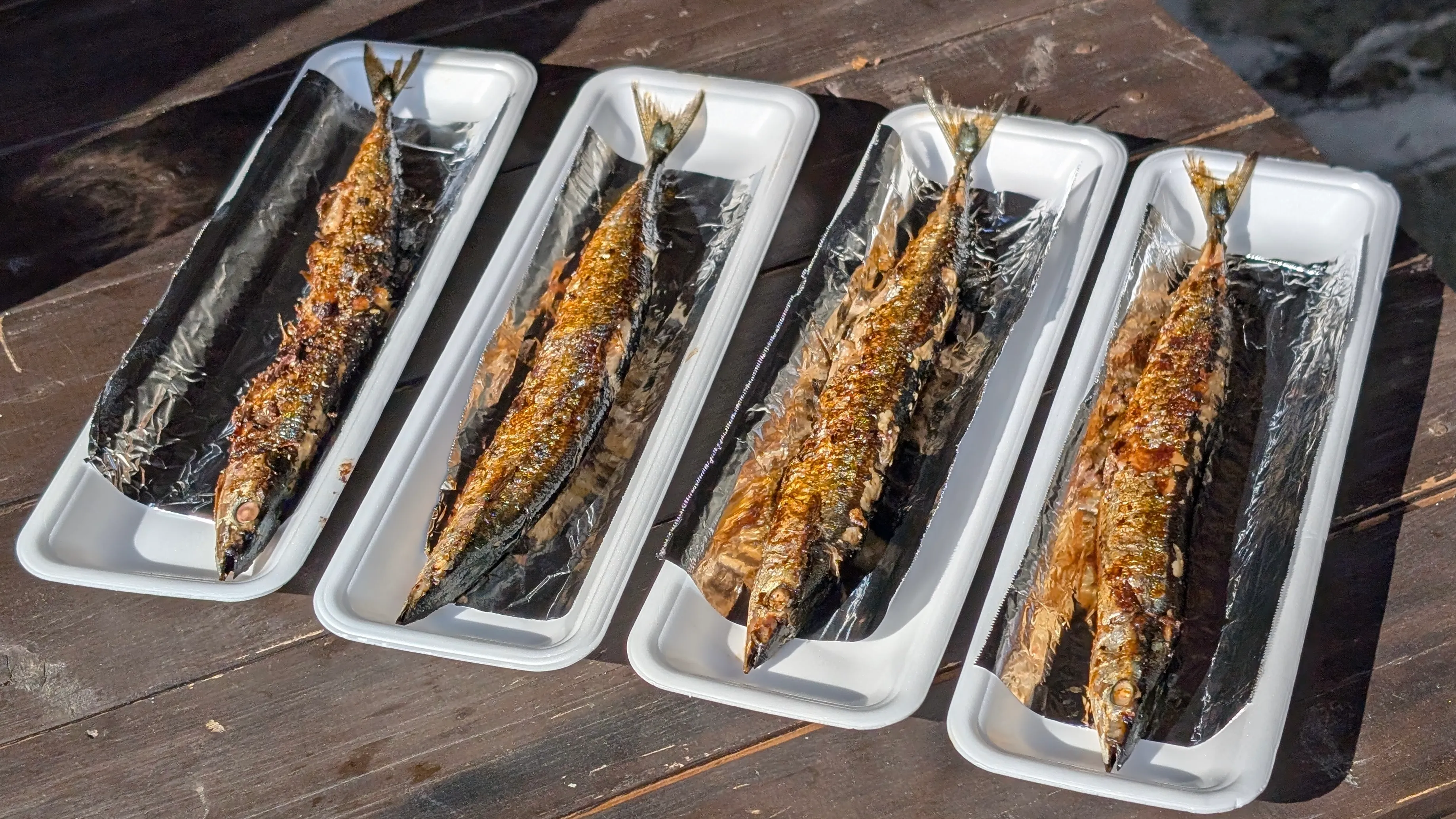
Afterward, we returned to the Izu Aquamarine store for a debrief and a rundown of equipment needed for ice floe diving.
The course ended around 4:30 PM, and I tried to find dinner on the way back, but most places were closed. I ended up enjoying soba at Teuchi Soba Sunaba Izu Kogen, one of the few open spots.
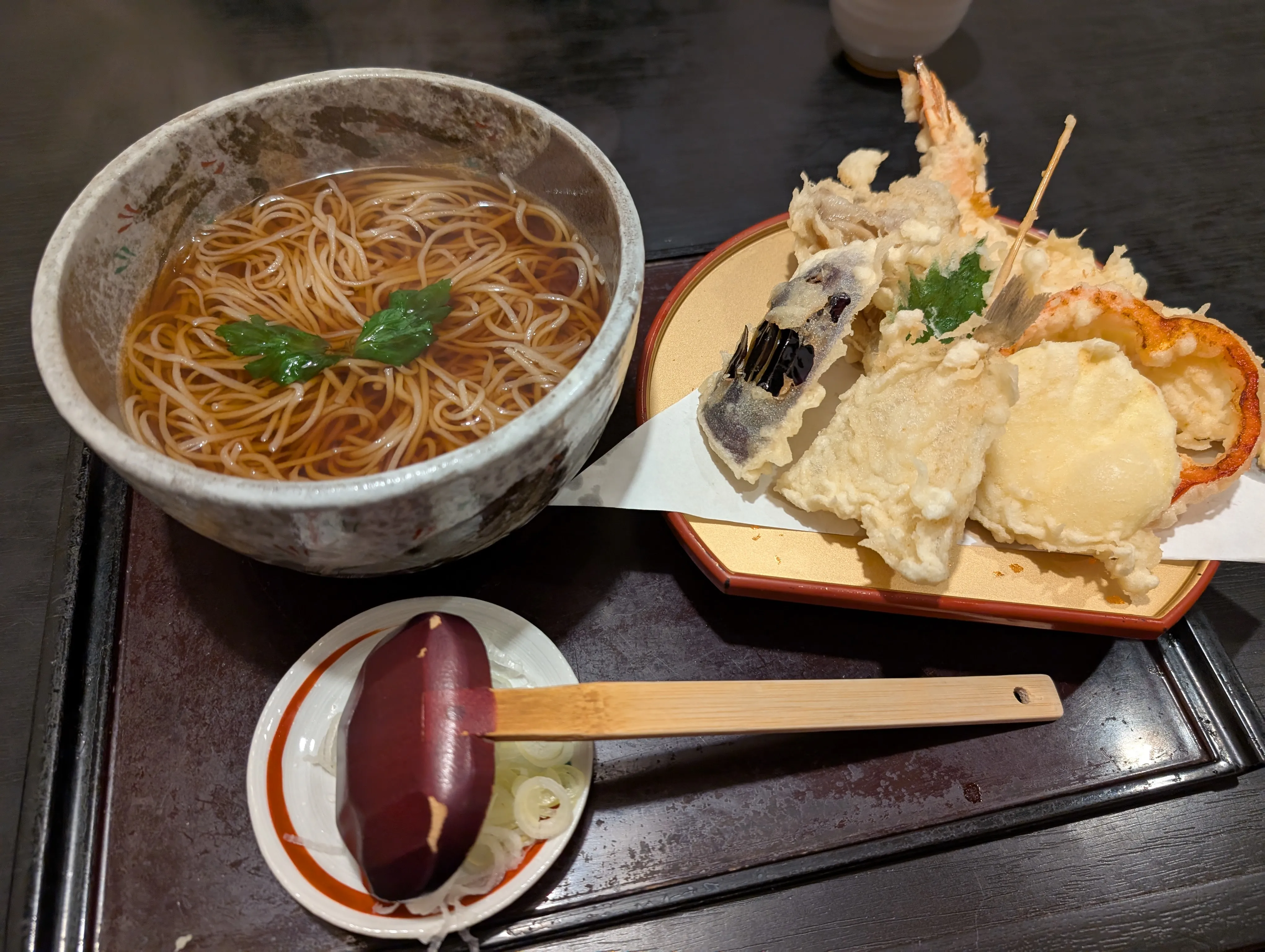
It was delicious and filling.
I’ll be practicing with the dry suit again next time!
Hoping for better buoyancy control next time 🙏


